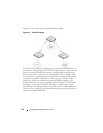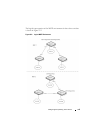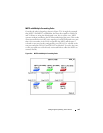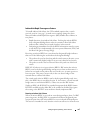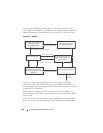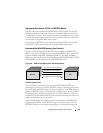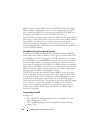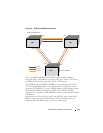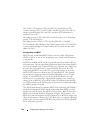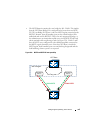
726 Configuring the Spanning Tree Protocol
To accelerate convergence time once DRC has switched over to a new root
port, STP-PV transmits dummy packets out the new root port, with the
source MAC addresses taken from its forwarding table. The destination
address is an SSTP MAC address that ensures that the packet is flooded on
the whole network. The packets update the forwarding tables on the other
upstream switches. The rate at which the dummy multicasts are sent can be
configured by the administrator. RSTP-PV has a different mechanism
adopted from IEEE 802.1w that handles the update of the forwarding
database and the fast transition to a new uplink. DRC can be enabled on
RSTP-PV enabled switches but has no effect.
DRC is disabled when the administrator modifies the spanning-tree priority
of a VLAN and is re-enabled only when the default priority is restored.
DRC and Link Up Events
In the event of failure of the primary uplink, a replacement uplink is
immediately selected from the uplink group and put into the forwarding
state. If another port is enabled that, in accordance with STP rules, should
become the primary uplink (root port), the switch delays migrating to the
new port for twice the forwarding delay. The purpose of this delay is two-fold:
• Stability—If the primary uplink is flapping, reenabling the link
immediately can introduce additional instability into the network.
• Reduced Traffic Loss—DRC moves a port into the forwarding state as
soon as it is up, but the connected port obeys the usual STP rules; i.e. it
goes through the listening and learning stages, which take 15 seconds each
by default. Delaying the switchover allows the connected port to go to
through the listening and learning states while the switch is still
transmitting packets on the original uplink.
The optimal behavior is to keep the current uplink active and hold the new
port in the blocked state for twice the forwarding delay.



